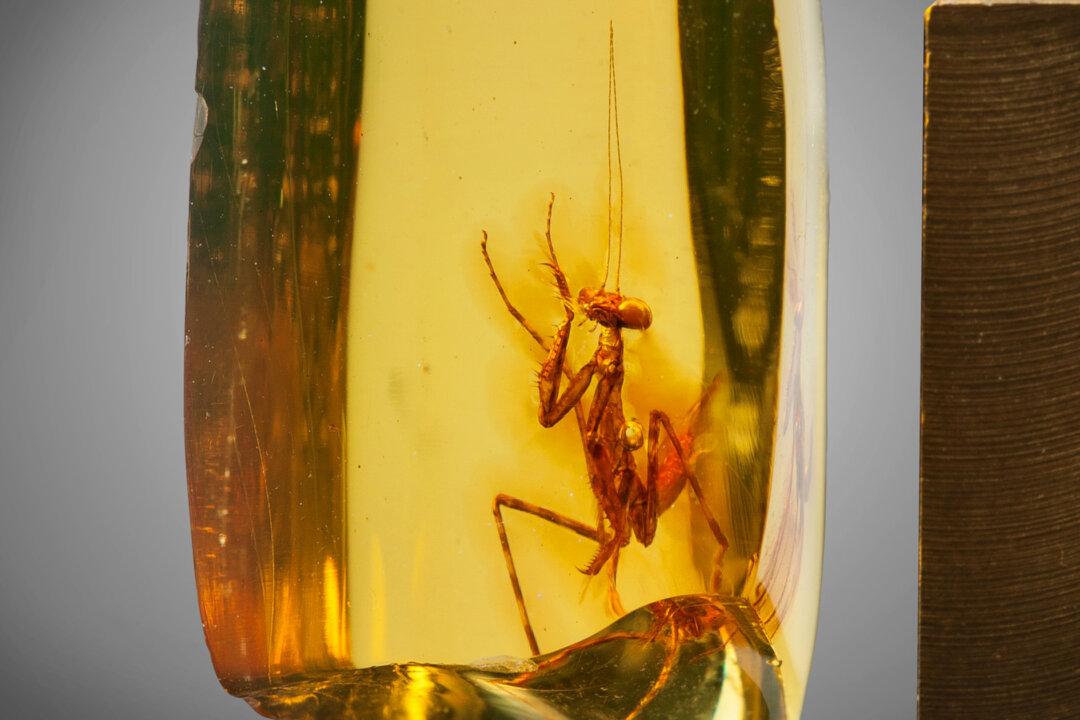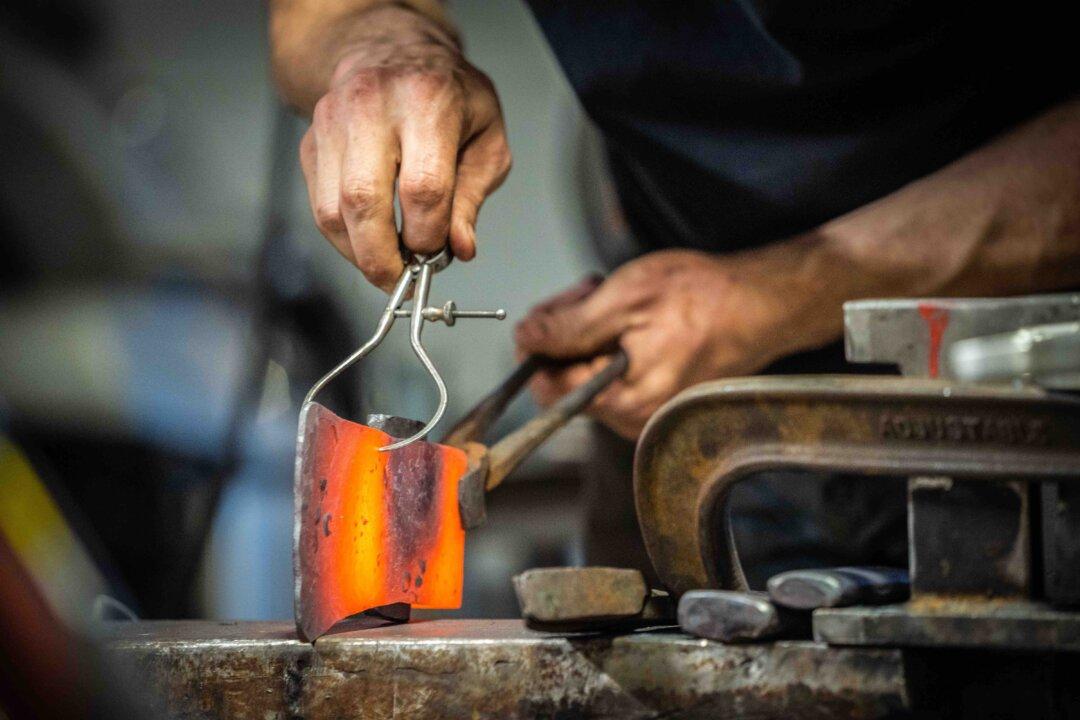A praying mantis, encased in amber and frozen in time since Earth’s ancient Paleogene Period, sparked a flurry of bids amongst collectors after its modern discovery in the Dominican Republic.
Some 30 million years ago, when giant rhinos and primitive three-toed horses roamed the earth, sticky resin leaking out of a single tree trapped a crawling praying mantis. The unfortunate creature died inside the sticky tomb, to be forever preserved as the resin fossilized, turning to amber.






